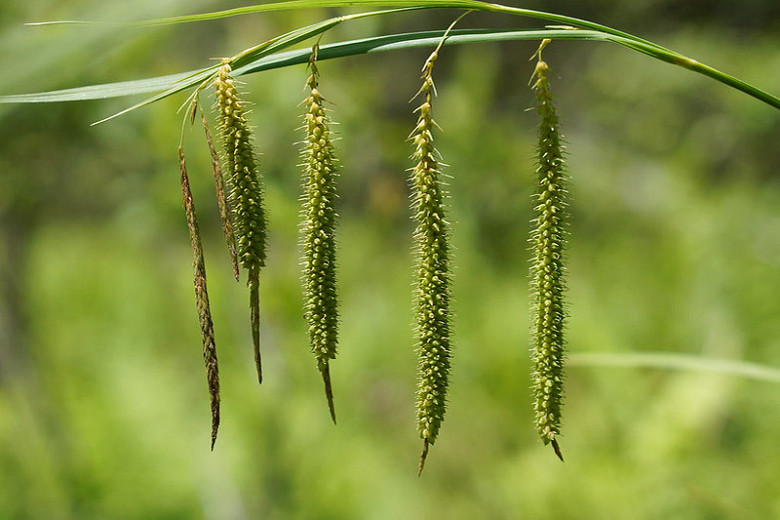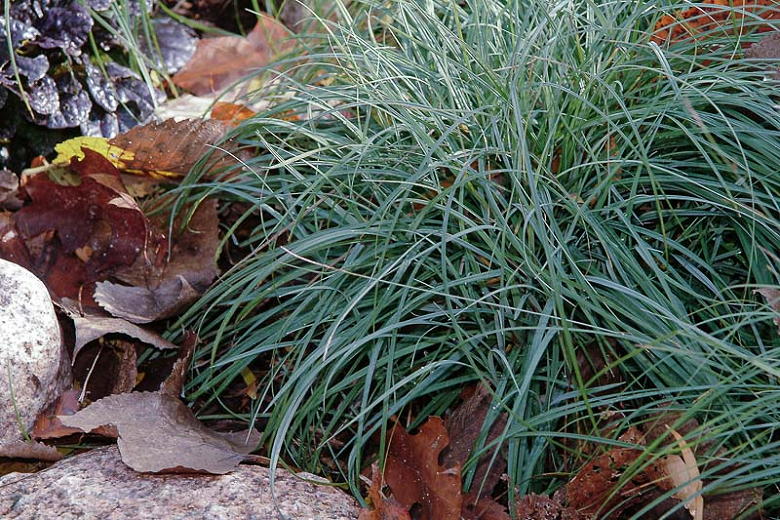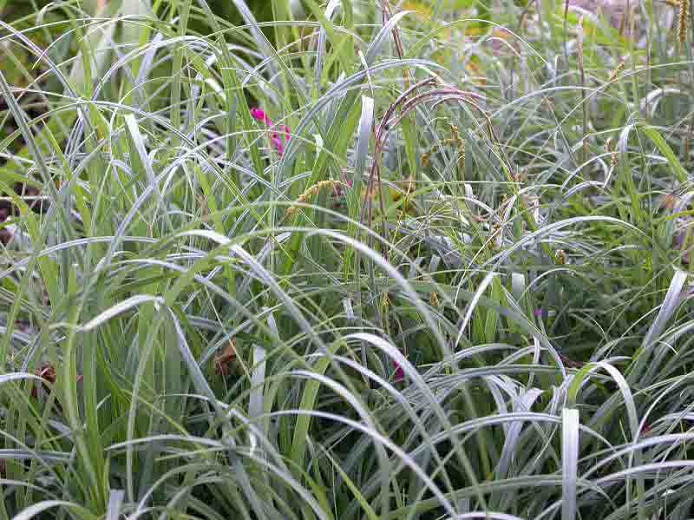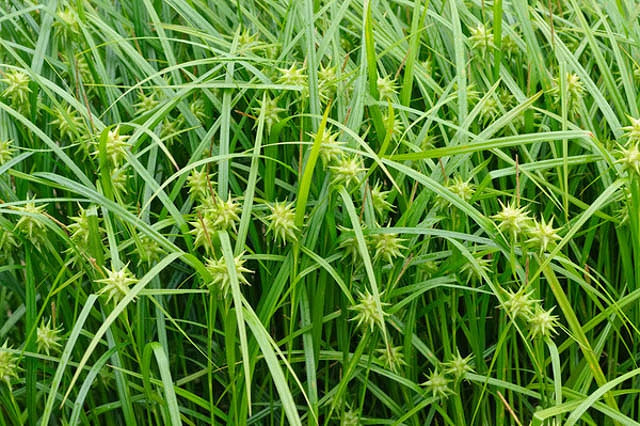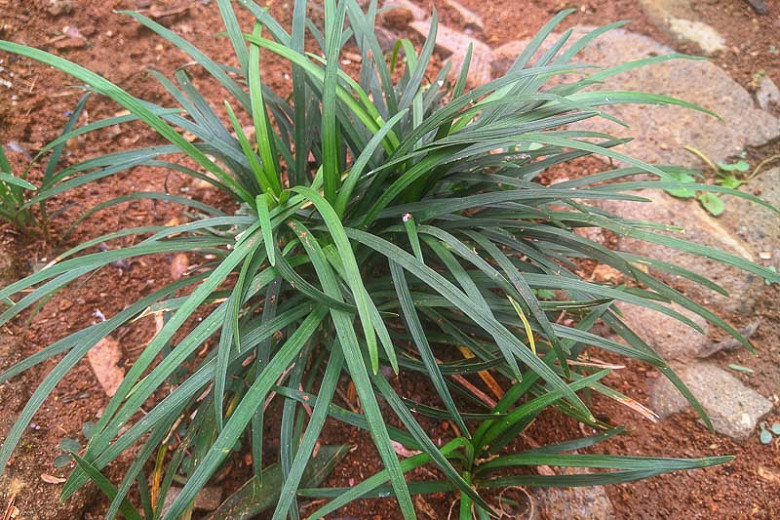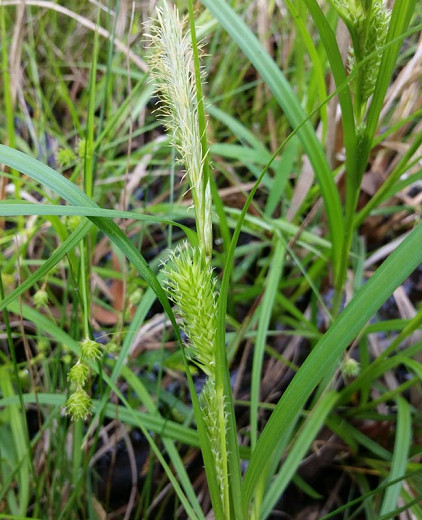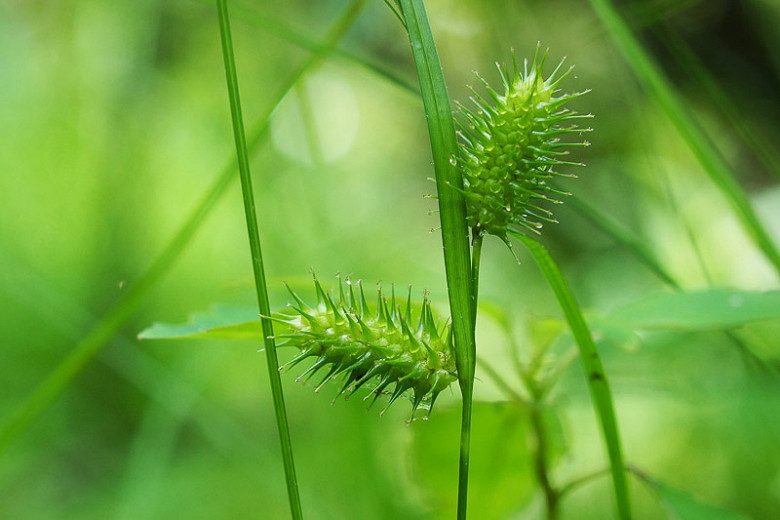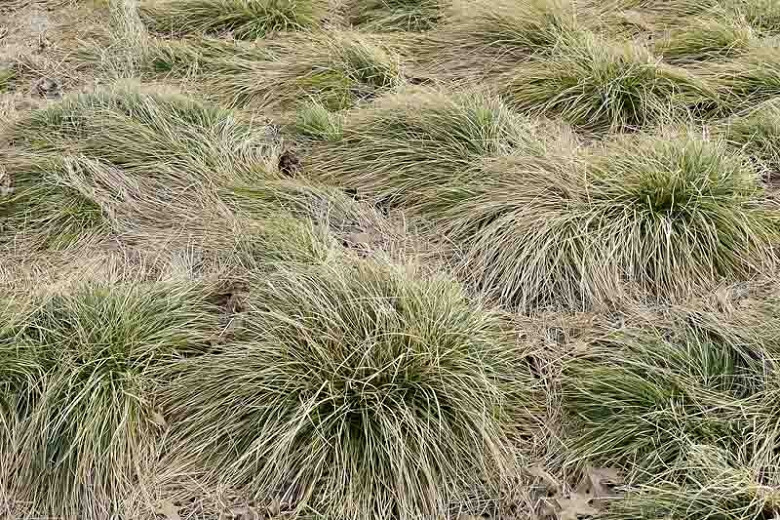Carex crinita (Fringed Sedge)
Striking in appearance, Carex crinita (Fringed Sedge) is a robust evergreen sedge forming dense clumps of leafy culms, up to 3 ft. tall (90 cm), clad with strap-shaped, shiny bright green leaves, 16 in. long (40 cm). In late spring to early summer, arching flowering culms, 4 ft. tall (120 cm), rise well above the foliage bearing drooping gray-green fringe-like spikelets. The female flowers are followed by small fruits enclosed in sac-like bracts. As the seed matures, they take on a golden brown color. Ducks, rails, and other wetland birds feed on the seeds or spikelets. Snapping Turtle, Eastern Mud Turtle feed on the spikelets or foliage. The root system is fibrous and rhizomatous. Fringed Sedge often forms large colonies of plants. Native to North America, Fringed Sedge occurs naturally in a wide variety of wetlands, including prairie swales, sandy sloughs, sedge meadows, wet prairies, wet dolomite prairies, marshes, gravelly seeps, swamps, bogs, borders of small lakes, and ditches. This emergent aquatic plant is useful for to combat soil erosion and is an excellent choice for a water garden, wetland garden or near ponds and streams.
- Grows up to 24-36 in. tall (60-90 cm) and 12-24 in. wide (30-60 cm). Will spread by rhizomes to form large colonies.
- Performs best in full sun to light shade in continually moist to wet soils. Prefers soil containing loam, sand, clay, gravel, or peaty material. Can be grown in standing water.
- A good choice for plantings in bog gardens, rain gardens or near ponds and streams.
- No serious pest or disease issues. Deer resistant.
- Propagate by seed or by division in spring.
- Native to eastern and central North America.
Requirements
| Hardiness | 3 – 8 |
|---|---|
| Plant Type | Ornamental Grasses, Perennials |
| Plant Family | Carex – Sedges |
| Exposure | Full Sun, Partial Sun |
| Season of Interest | Spring (Late)Summer (Early,Mid,Late)Fall |
| Height | 2' – 3' (60cm – 90cm) |
| Spread | 1' – 2' (30cm – 60cm) |
| Spacing | 18″ – 24″ (45cm – 60cm) |
| Water Needs | Average, High |
| Maintenance | Low |
| Soil Type | Clay, Loam, Sand |
| Soil pH | Acid, Alkaline, Neutral |
| Soil Drainage | Moist but Well-Drained, Moisture Retentive, Poorly Drained |
| Characteristics | Showy, Evergreen |
| Native Plants | United States, Midwest, Illinois, Indiana, Iowa, Michigan, Minnesota, Missouri, Ohio, Wisconsin, Northeast, Connecticut, Delaware, Maine, Massachusetts, Maryland, New Hampshire, New Jersey, New York, Pennsylvania, Rhode Island, Vermont, Southeast, Alabama, Arkansas, Georgia, Kentucky, Louisiana, North Carolina, South Carolina, Tennessee, Virginia, West Virginia, Southwest, Oklahoma, Texas |
| Tolerance | Deer, Wet Soil |
| Attracts | Birds |
| Garden Uses | Bog Gardens, Ponds and Streams, Rain Gardens |
| Garden Styles | Informal and Cottage |
